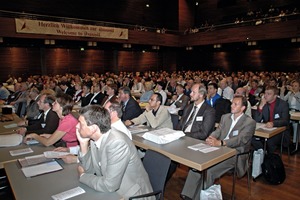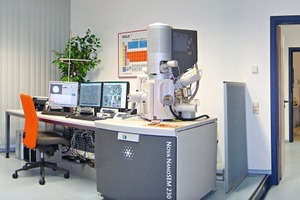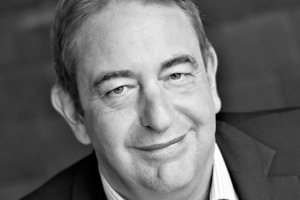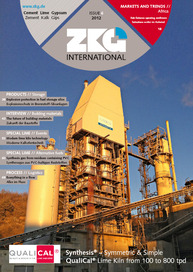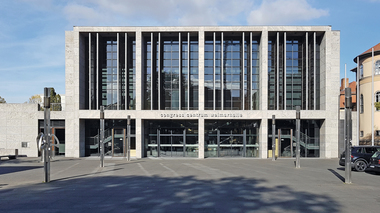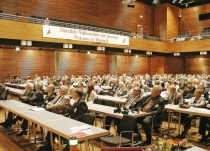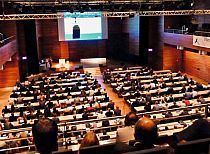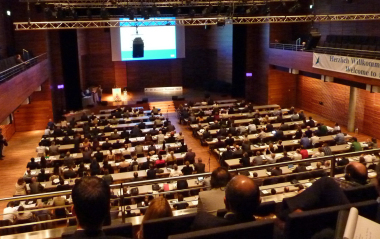For the 18th time building material experts from all over the world will meet in Weimar/Germany for the international building materials conference “ibausil”. This year also the team of the F. A. Finger Institute for Building Materials Science at Weimar Bauhaus University have succeeded in compiling a very interesting lecture program. ZKG asked Prof. Dr.-Ing. Horst-Michael Ludwig, who has the Chair of Building Materials at Weimar Bauhaus University, what the participants at the ibausil can expect.
ZKG: Prof. Ludwig, the next ibausil is just around the corner. How many participants do you expect from which special fields and from which countries?
Horst-Michael Ludwig: The number of the submitted lectures already shows the great interest in the ibausil. More than 500 lectures were sent in. However, unfortunately we could accept only about 300. We again expect about 700 participants from more than 40 countries. We still consider the ibausil also as a platform for special discussions between building material scientists from the east and the west. The German Research Foundation kindly supports us and due to their financial contribution will also make it possible for scientists from Eastern Europe and from the former CIS states to take part.
ZKG: What are the current topics in the building materials sector and which of these will be covered at the ibausil?
Horst-Michael Ludwig: As with many other branches, the topics ‘sustainability’ and ‘climate protection’ are also at the top of the agenda in the building materials sector. Corresponding contributions will play a major role at the ibausil. New approaches for the manufacture and use of building materials poor in CO2 will be covered as well as the important questions regarding the conservation of natural resources and building materials recycling. The durability of concrete is still another major topic, which is indirectly connected with the conservation of resources. This topic will also be dealt with in many lectures at the ibausil, whereby the alkali-silica-reaction problem will take up a significant amount of time in an special session. Other main topics will deal with the basic problems of the mechanisms of hardening of the various binders, the different interactions of additives and binders, the development and use of special concretes as well as building prevention and restoration.
ZKG: Are there any new formats or changes in comparison to the last ibausil in 2009?
Horst-Michael Ludwig: Over many decades, the ibausil has developed into one of the largest and most successful building material conferences in Europe. Against this background I rely on continuity and I want to continue the successful and committed work of my predecessor, Prof. Stark. As a result, there are only two minor changes compared to previous conferences. During the last two ibausil conferences we established that the conference attracts more and more participants from Western Europe and overseas. Therefore, this time we decided to offer simultaneous translation German/English and English/German in the main hall 1. In addition, the large topic blocks are preceded by a general report as an introduction to the overall problems and to describe the current state of knowledge.
ZKG: In particular the building materials industry is looking towards the ibausil with great anticipation. What increase in information can participants from the field of production expect from the conference?
Horst-Michael Ludwig: Many lectures will deal with the production and use of cements with various main components except clinker. At present the reduction of the clinker factor by means of alternative main constituents in the cement is one of the main instruments for cement manufacturers to reduce the CO2 emission during production. In addition to the selection of suitable materials, an optimum manufacturing process and modern production monitoring play a decisive role as regards the efficiency of these composite cements. However, the ibausil also always offers the opportunity for the building materials producers to receive information regarding current trends and problems of application in the building materials manufactured by them and to draw conclusions for their building materials production.
ZKG: In your opinion, what is the future of the building materials sector, for example, what will be the importance of life cycle approaches in the future?
Horst-Michael Ludwig: Questions of sustainability will doubtlessly have increasing importance in the building materials sector. Not only the ever more stringent rules and laws, but also the new self-image of the building materials branch itself and particularly of the customers will play a role. Eco-balancing and environmental product declarations have long since ceased to be marketing instruments. They become more and more important for the decision of customers as regards the selection of a building product. An important consequence of this development will certainly be that the CO2 emission will be further reduced in future in the manufacture of cement. Furthermore, the building materials sector will have to adjust to the increasing technical requirements. Today many customers require highly specialized solutions for their specific fields of application. For example, cements with individualized properties, which have been optimized for various fields of application will be increasingly offered. This development will be reinforced, also in the light of new challenges in concrete construction, e.g. for offshore wind power stations.
ZKG: You are well equipped in Weimar. Are there any new results at the F. A. Finger Institute as regards cement hydration and on what are you currently working?
Horst-Michael Ludwig: First I would like to underline that, at the institute, we deal not only with cement and concrete. At my chair alone ten different working teams deal with the most different topics, from wood to building materials recycling. However, cement and concrete are the traditional main topics at the institute. As regards the hydration of cement clinker phases, we currently deal intensively with the hydration mechanisms of alite. In the meantime we could prove that the main clinker phase does not hydrate in one step but through an intermediate phase. Understanding this basic mechanism offers potentials in many ways, e.g. for a completely new generation of binders based on these reactive intermediate phases. On the other hand, our main attention is also turned to the investigation and further development of reactive composite materials, which are not yet used on a large scale in cement. In particular the calcined clays and slags from steel mills occupy a large part of the research work of the FIB.
ZKG: What result do you expect from the conference?
Horst-Michael Ludwig: I would be very pleased if, at this year’s ibausil we also succeed in offering a platform for the various areas of building materials research and application. It is important to us to bring together experts from the east and west, but also from research and industry who otherwise hardly ever have the opportunity of direct communication. We would be highly satisfied if in summary we can say that this conference offered such a communication platform.
ZKG: Many thanks for the interview.

